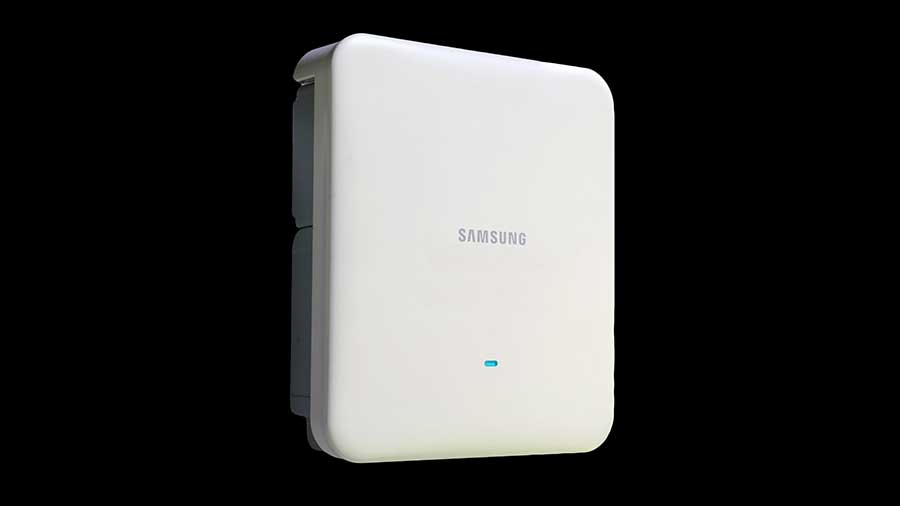CBRS Spectrum Could Open Windows of Opportunity for Cable Ops

As cable operators form and evolve their mobile and wireless strategies, a swath of spectrum that’s opening up could very well take them down a new path that can not only enhance their existing offerings but also open doors to new ones.
That all centers on Citizens Broadband Radio Service (CBRS), a 150 MHz-wide batch of what will become shared-use spectrum living in the range of 3.55 GHz to 3.7 GHz. The FCC established rules for enabling that shared-spectrum band in April 2015.
That spectrum has been underutilized, with the bulk of it used by the U.S. Navy for flight operations for aircraft carriers, along with some satellite uplinks.
The FCC rules create a way to reapply that lightly used spectrum to complement and enhance the limited pool of licensed spectrum that carriers have paid dearly for.
But the rules also support an engineering-focused approach to ensure that usage of the CBRS band doesn’t interfere with the incumbent users in the form of new spectrum allocation servers that are authorized by the FCC. Generally, those servers check for interference issues with the Navy, for example, before providing a spectrum grant in the CBRS band.
CBRS radios will need to be in constant contact with the spectrum allocation servers, and there’s work underway to build a sensor network along the coastline to detect Navy flight operations. If there is an interference issue, the radios would be commanded to move to a clean channel.
“It’s like a grand experiment,” Steve Martin, chief technology officer of Ruckus Wireless, said, noting that the coordinated, shared aspects of CBRS are unique.
Broadcasting & Cable Newsletter
The smarter way to stay on top of broadcasting and cable industry. Sign up below
One company that’s placing a big bet on CBRS and spectrum controller systems is Federated Wireless, which recently wrapped up a $42 million “B” round that included participation from two big names from the cable industry — Charter Communications and Arris, which is in the process of acquiring Ruckus Wireless. The system Federated Wireless is building will run on a cloud-based service, a network of sensors that identify and protect incumbent users of the CBRS band, spectrum sharing tools, and an “open” ecosystem for CBRS-based products.
“From our point of view, this is an absolutely fascinating area,” Duncan Potter, senior VP of marketing at Arris, said of CBRS.
Added Imran Akbar, VP and general manager, wireless enterprise, at Samsung Electronics America, “The first segment of companies that are going after this are the cable companies, especially the leading cable companies.”
As to what CBRS could have to do with cable, plenty of potential use cases are emerging. The CBRS band could, for example, help MSOs get access to spectrum that augments the spectrum they are using in their MVNO deals. Comcast is using the MVNO model for Xfinity Mobile (with Verizon as the partner) and Charter has similar plans underway.
It’s also possible cable operators will build CBRS-based small cells and supply the backhaul, effectively accessing capacity and spectrum that is less expensive than what comes with their MVNO agreements.
Martin said it could make sense for an operator to build out CBRS infrastructure in areas with high concentrations of subscribers. When customers aren’t in reach of that network, they roam to the MVNO network.
“The economics are good for [CBRS] spectrum, and it’s good spectrum, too,” said Ralph Brown, chief technology officer at CableLabs, which is also a member of the CBRS Alliance and contributing to its scope of work. The CBRS work adds to what CableLabs is doing with technologies such as WiFi and 5G. “The broader strategy we’re pursuing is to make sure our members have competitive positions in any one of those [areas], depending on what their business objectives are,” Brown said.
Cable operators might also use CBRS as a fixed wireless technology that helps them reach areas that are not covered by their wired networks, or as a solution for business service customers that want to beef up wireless coverage in their buildings.
Samsung’s Akbar said CBRS will open the door to “neural host companies” that build the infrastructure at an airport and sell access to carriers. That same model could be used in multiple-dwelling unit sites, he added.
The timing of when this will all come together remains a question, though some in the industry hope it will be ironed out by the FCC in the first half of 2018, with buildouts to follow in the second half.
“We are neck-deep in trials today with cable companies and starting with some neutral host companies and tower companies,” Akbar said, predicting that CBRS will begin to take off in a big way by 2020.
